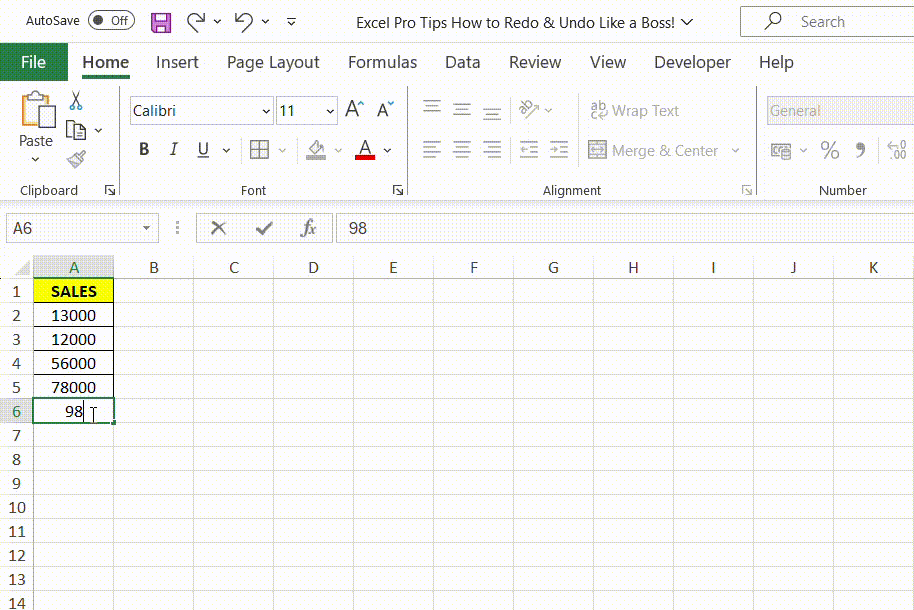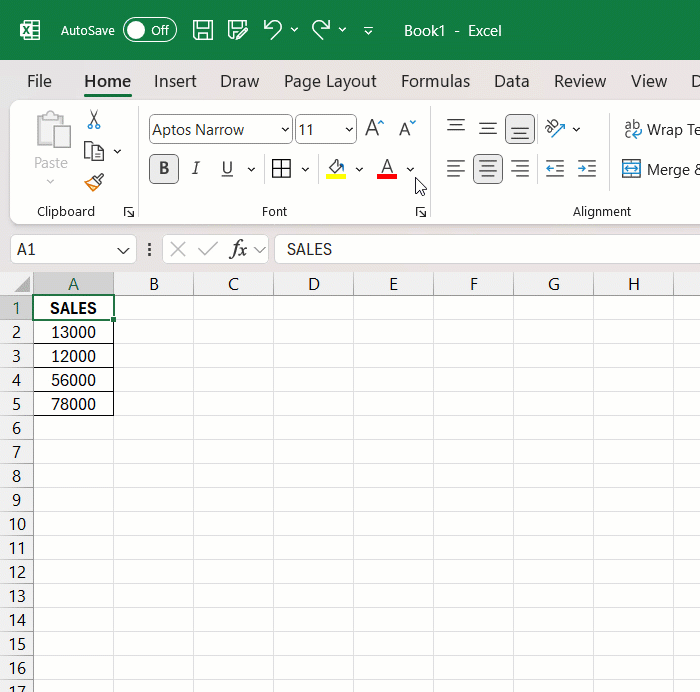On the flip side, got a bit too trigger-happy with undoing? ‘Ctrl+Y’ swoops in to redo. These keystrokes are your Excel safety net, ensuring that no error or accidental deletion leaves you stranded.
Imagine how ‘Ctrl+Z’ and ‘Ctrl+Y’ play tag-team—while one reverts changes, the other brings those changes back. It’s so simple, yet so impactful.
Why Proficiency in Undo and Redo Matters for Excel Users
Think of mastering Undo and Redo as your Excel insurance policy. The last thing anyone wants is to lose their work or, worse, flex their creativity only to realize they’ve mistyped an important formula. Proficiency in these features isn’t just about fixing errors quickly; it’s about experimenting without hesitation, knowing you can always step back to a safer point. Whether refining data sets or testing out formatting, Undo and Redo give you the freedom to explore Excel’s possibilities with a safety net firmly in place.
Moreover, becoming adept at using Undo and Redo in Excel shows a level of spreadsheet sophistication. It sends a message that you’re not only meticulous but also resourceful—qualities that can make your workflow smoother and impress those you work with.
Harnessing the Undo Function in Excel
How Undo Works in Excel
Undo in Excel is like having a time machine for your spreadsheet. When you make a move you didn’t mean to, or immediately regret a change, Undo is there to whisk you back to a moment before those digits went awry. Here’s the nitty-gritty: Undo remembers the steps you’ve taken in reverse order. Delete a row?
Undo pops it right back. Accidentally recolored a series of cells? Undo reverts to the original hue. It’s not picky either; it works with almost every action you can perform on your spreadsheet, whether it’s formatting, inserting, or editing data.
Activating Undo is a cakewalk. Click the ‘Undo’ button sitting pretty in the Quick Access Toolbar, or simply use the keyboard shortcut “Ctrl + Z” (or “Command + Z” for the Mac crowd).
And if you’ve been particularly busy, don’t fret—you can undo multiple actions by hitting that shortcut repeatedly, stepping back through each change like a dance in reverse.
Overcoming Limitations of Undo in Excel
While the Undo button can feel like a superhero at times, even superheroes have their kryptonite. In Excel, some actions slip through the cape of ‘Ctrl+Z’. For instance, actions like clicking menu items, saving files, and the unavoidable deletion of sheets are beyond Undo’s reach. Remember, Undo can’t revive what’s not there anymore!
Fret not, there’s still a safety net—being proactive. Regularly saving your work, plus employing Excel’s Backup and Restore features, are the best sidekicks to Undo. Use versions and backups to safeguard your work before those irreversible actions are taken. And don’t let saving after every significant change slip your mind—it can be the stitch in time that saves nine.
As a tip to bridge the gap, keep in mind Excel’s Undo limits. Excel tracks the last 100 actions, so pace your work accordingly. If you’re dealing with bulk data or complex macros, consider breaking your tasks into chunks to keep within this Undo safety zone.
Excelling with Excel’s Redo Capability
The Essential Redo Shortcut for Quick Corrections
Now onto Redo—the faithful companion to Undo. Let’s say you’ve been a tad overzealous with that handy ‘Ctrl+Z’, rolling back more steps than you intended. Enter the equally important ‘Ctrl+Y’. This command steps forward through the history of your actions, restoring them one by two with each tap. Or perhaps you’re in the Apple orchard, working on a Mac; no worries, just substitute ‘Ctrl’ for ‘Command’ and carry on with ‘Command + Y’.
The Redo feature assures you that playing around with your data won’t lock you into a corner. Think of it as an experimental buffer; try different formulas or layouts with the peace of mind that Redo is there to replay your past few steps. With Redo in your Excel tool belt, you’re ready to correct quick missteps efficiently and keep your workbook progress flowing smoothly.
When and How to Redo Multiple Actions
There’s something almost magical when you can Redo multiple actions in Excel with just a few clicks. This feature becomes your time-saving wizard when you’ve undone a little too much and need to reapply that batch of actions. No need for repetitive keystrokes or mouse clicks; Redo has a trick up its sleeve.
Here’s how you summon this sorcery:
STEP 1: Click the little arrow next to the Redo button, and a list of actions spills out, like a rabbit from a hat. This list is your editing history, your past moves awaiting your command.
STEP 2: Glide your cursor down this list, and as you do, Excel will highlight the sequence of actions up for Redo. It’s like setting the stage for the acts to replay.
STEP 3: The grand finale is when you click on the last action you want to Redo, and voilà—the deeds are done, and your spreadsheet is back to its former glory.
Feeling keyboard savvy? Good news: ‘Ctrl + Y’ isn’t a one-hit wonder. Keep pressing, and Excel dutifully redoes your steps till you tell it to halt. Remember, Excel grants you the power to Redo actions in the exact order they were undone, so each click or keystroke is a precise step toward restoration.
Frequently Asked Questions (FAQs)
Where can I locate the undo and redo buttons in Microsoft Excel?
In Microsoft Excel, you’ll find the Undo and Redo buttons lounging in the top-left corner. The Undo button flaunts a curved arrow pointing to the left and can also be seen chilling in the Quick Access Toolbar. Just a hop, skip, and a jump away is the Redo button, sporting a right-pointing curved arrow. Spot them swiftly and use them to navigate through your edits with ease.
Can I Undo or Redo Actions After Saving an Excel File?
Absolutely! In Excel, saving your file doesn’t wipe your Undo slate clean. Feel free to save and breathe easy knowing you can still undo and redo actions post-save, as long as you remain within Excel’s action memory limit and haven’t closed your workbook.
How many times can I undo my actions in Microsoft Excel?
Your do-overs in Microsoft Excel have a ceiling—up to 100 undos to be precise. Whether it’s a rogue formula or a formatting faux pas, you have a century of steps to backtrack, ensuring ample wiggle room for refining that perfect spreadsheet.
What is the opposite of Ctrl Z in Excel?
In Excel, the opposite of ‘Ctrl + Z’, the Undo shortcut, is ‘Ctrl + Y’, known as the Redo shortcut. While ‘Ctrl + Z’ helps you retract your latest action, ‘Ctrl + Y’ lets you reapply it, making it the perfect tag team for navigating your workflow.
Is There a Limit to How Many Actions I Can Undo or Redo in Excel?
There is indeed a limit in Excel: you can only undo up to 100 of your most recent actions, and this capacity resets when you shut down the workbook. Redo plays by the same rules, but it’s limited to redoing only what you’ve just undone and won’t work beyond that scope.
John Michaloudis is a former accountant and finance analyst at General Electric, a Microsoft MVP since 2020, an Amazon #1 bestselling author of 4 Microsoft Excel books and teacher of Microsoft Excel & Office over at his flagship MyExcelOnline Academy Online Course.











